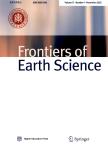Infrastructure for collaborative science and societal applications in the Columbia River estuary
Infrastructure for collaborative science and societal applications in the Columbia River estuary作者机构:NSF Science and Technology Center for Coastal Margin Observation & Prediction Oregon Health & Science University Portland Oregon 97239 USA Oregon Health & Science University Astoria Oregon 97103 USA Portland State University Portland Oregon 97201 USA Applied Physics Laboratory of the University of Washington Seattle Washington 98105 USA Oregon State UniversityCorvallis Oregon 97331 USA Formerly University of Maryland Center for Environmental Studies Maryland 21613 USA
出 版 物:《Frontiers of Earth Science》 (地球科学前沿(英文版))
年 卷 期:2015年第9卷第4期
页 面:659-682页
核心收录:
学科分类:082802[工学-农业水土工程] 0839[工学-网络空间安全] 08[工学] 0828[工学-农业工程]
基 金:National Science Foundation NSF: 0424602 1053575
主 题:estuaries observations numerical modeling,cyber-infrastructure Columbia River
摘 要:To meet societal needs, modem estuarine science needs to be interdisciplinary and collaborative, combine discovery with hypotheses testing, and be responsive to issues facing both regional and global stakeholders. Such an approach is best conducted with the benefit of data-rich environments, where information from sensors and models is openly accessible within convenient timeframes. Here, we introduce the operational infrastruc- ture of one such data-rich environment, a collaboratory created to support (a) interdisciplinary research in the Columbia River estuary by the multi-institutional team of investigators of the Science and Technology Center for Coastal Margin Observation & Prediction and (b) the integration of scientific knowledge into regional decision making. Core components of the operational infrastructure are an observation network, a modeling system and a cyber-infrastructure, each of which is described. The observation network is anchored on an extensive array of long-term stations, many of them interdisciplinary, and is complemented by on-demand deployment of temporary stations and mobile platforms, often in coordinated field campaigns. The modeling system is based on finite- element unstructured-grid codes and includes operational and process-oriented simulations of circulation, sediments and ecosystem processes. The flow of information is managed through a dedicated cyber-infrastructure, con- versant with regional and national observing systems.



